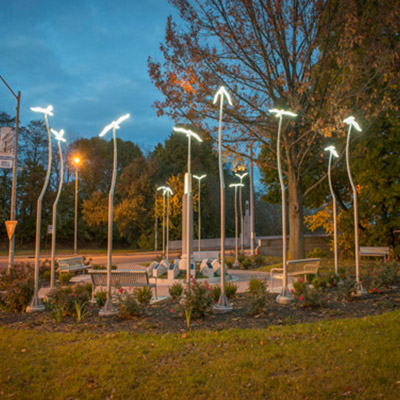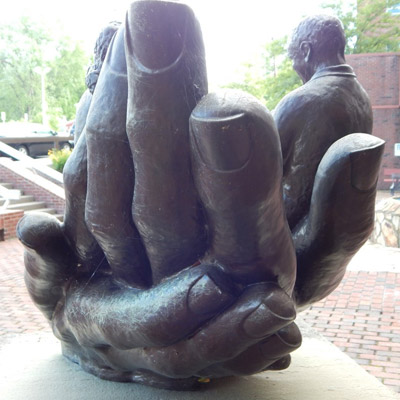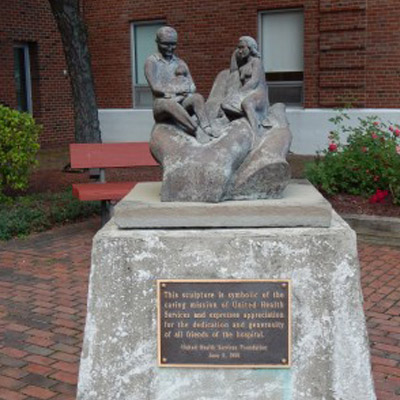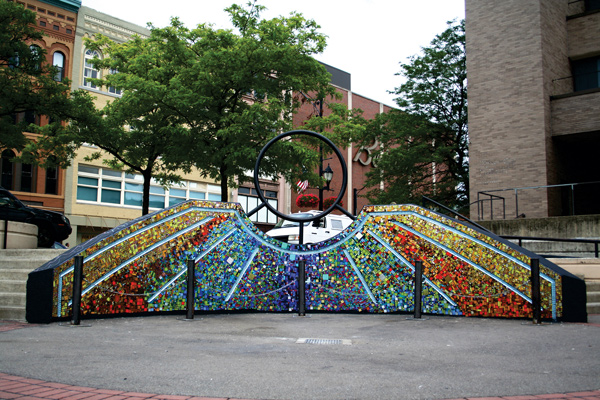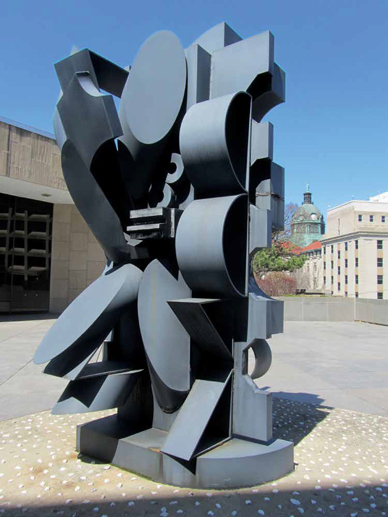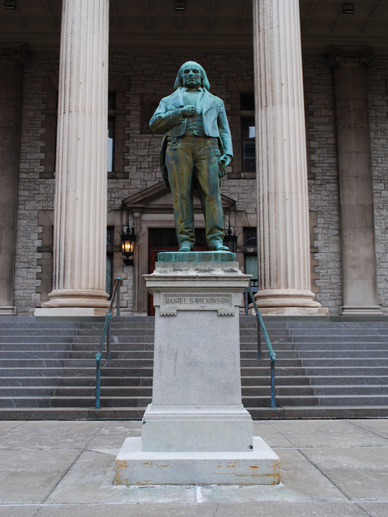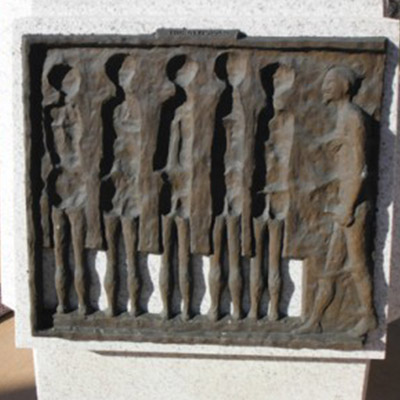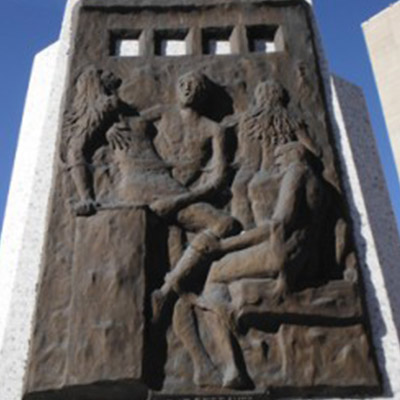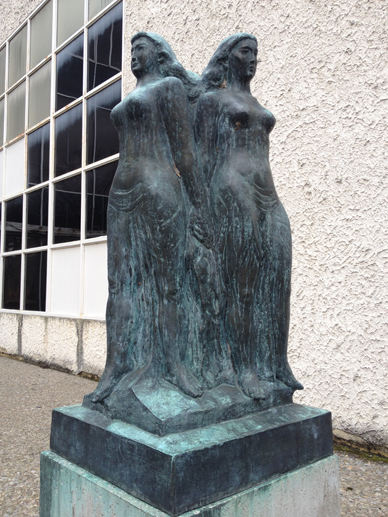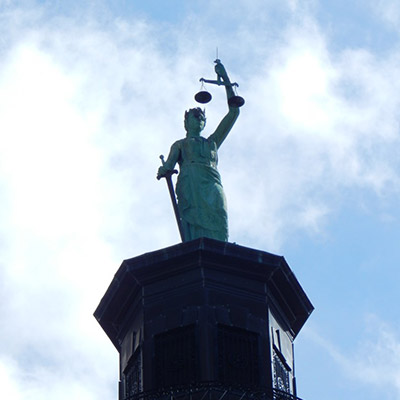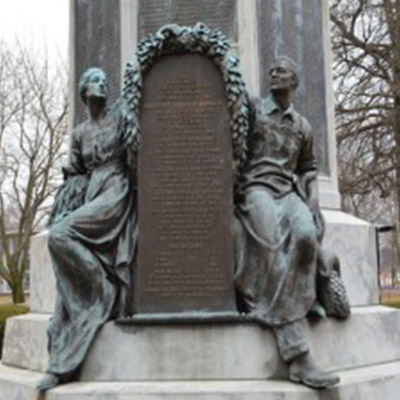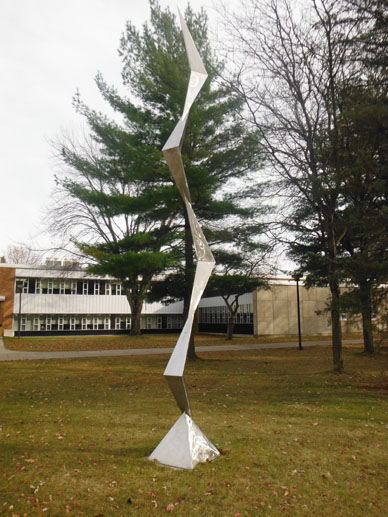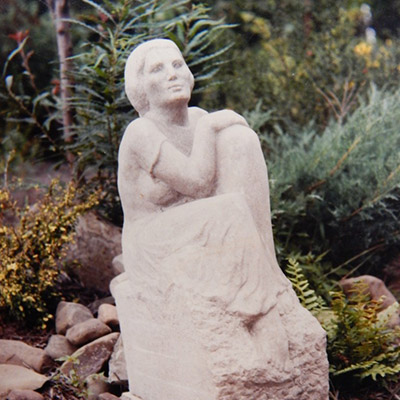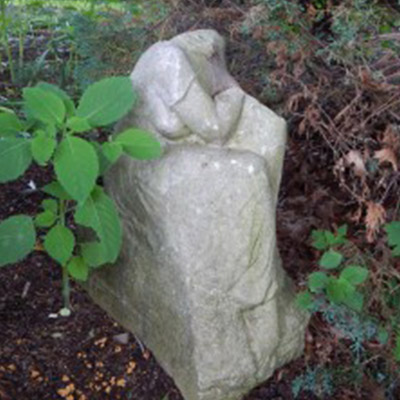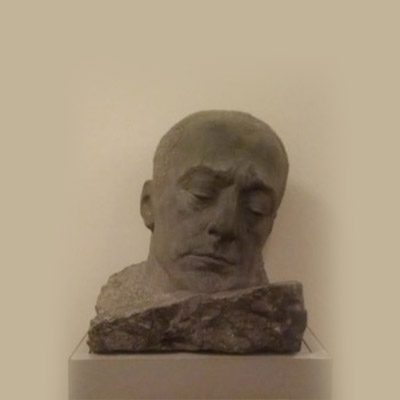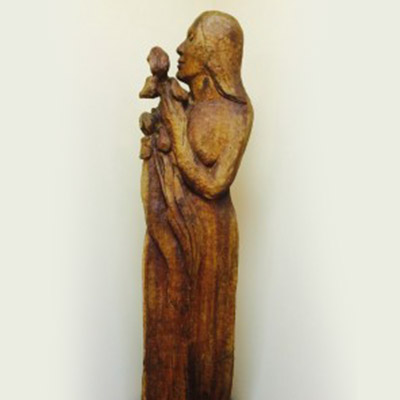Reviewed by George Basler
The musical Sunday in the Park with George asks some provocative questions: What obsession is needed to be a great artist? Why is great art sometimes not recognized in an artist’s lifetime? What is the personal cost of creating great art?
A first-rate production being performed weekends through June 30 at the Ti-Ahwaga Performing Arts Center in Owego takes a compelling look at these questions.
The musical — with music and lyrics by Stephen Sondheim, and a book by James Lapine — is the exact opposite of a big, splashy Broadway show. You won’t see big production numbers here. What you will see is a complex theatrical experience with two multi-dimensional main characters and an ending that speaks to the heart in a very real way.
Presenting the show is no easy task. It requires a large cast that can handle a challenging musical score and an equally challenging plot. The Ti-Ahwaga production delivers with a classy effort that is well-sung and well-acted.
Sunday in the Park with George is considered a landmark American musical. It won the 1985 Pulitzer Prize for Drama, one of the few Broadway musicals to be so honored.
At the same time, it’s a show that can be demanding for audiences. Sondheim is a polarizing composer whose songs are lyrically and vocally intricate and almost demand repeated listening to appreciate. Lapine’s book is equally complex with two distinct parts from different time periods.
Sondheim and Lapine used the painting “A Sunday Afternoon on the Island of La Grande Jette” by French painter Georges Seurat as the inspiration for the musical. The painting, done in the revolutionary pointillist style, now hangs in the Art Institute of Chicago.
The first act takes place between 1884 and 1886 when Seurat (Matthew O’Ryan) is working to finish his masterpiece. In the process he alienates the French art establishment while derailing his relationship with his mistress, Dot (Amanda Blake), who loves him but can no longer tolerate his obsessive nature and emotional coldness.
The second act, played by the same cast, takes place nearly 100 years later when George and Dot’s great grandson, also an artist named George, is working to pursue his own vision. Specifically, he has created a reflection on Seurat’s painting in the form of a light machine called “Chromolume #7.” An exhibition of the work is taking place in an art museum where a critic tells him he is wasting his talent.
Sondheim and Lapine begin the act by taking satirical, and quite humorous, swipes at so called art connoisseurs, the feckless nature of public taste and the need to balance creativity with the commercial demands of the marketplace. (Parallels to Sondheim’s career are not coincidental.)
The creators then switch the tone as George finds himself dealing with self-doubt and the fear that he has reached a creative dead end. Dot appears to him in the form of a vision to give encouragement and hope in show’s penultimate song, “Move On,” that is arguably one of Sondheim’s greatest and most personal songs.
It’s a sublime moment, beautifully sung by O’Ryan and Blake, who do outstanding jobs in the two roles that are at the center of Sunday in the Park with George.
Blake is feisty and vulnerable as Dot in the first act, and humorous and poignant as Marie, younger George’s great grandmother, in Act 2. O’Ryan is a commanding presence as Seurat, the obsessed artist, in Act 1. He is equally convincing as the uncertain, conflicted George in Act 2. The song “Putting It Together,” which he performs with the ensemble, is a trenchant commentary on the creative process.
The entire Ti-Ahwaga production is top drawer. Credit goes to Anna Rizzotti, who has skillfully directed the large, 16-member cast, notably in the tableaux scenes.
Rizzotti worked with Lighting Designer Laura Kensley to create some striking effects that heighten the emotional impact of scenes. The costume design by Julia Adams encompasses both the 19th and 20th centuries. Music Director Christopher Vanderwerker conducts a marvelous nine-member orchestra, which is a large ensemble for a local production.
Sunday in the Park with George has problematic elements. The characters in Act 1, other than George and Dot, are presented as two-dimensional characters. They aren’t very interesting or sympathetic. Many of Sondheim’s songs, which feature discordant chords, are difficult to absorb on first hearing.
But the Ti-Ahwaga production is a striking one that is well worth seeing. Sunday in the Park with George may not be Sondheim’s most popular musical, but it’s his most personal.
IF YOU GO: Ti-Ahwaga Community Players will present Stephen Sondheim’s Sunday in the Park with George through June 30 at the Ti-Ahwaga Community Playhouse, 42 Delphine St., Owego. Friday and Saturday performances are at 8 p.m. Sunday performances are at 2 p.m. Tickets at $30 ($25 for students and ages 65 and over) are available at www.tiahwaga.com or by calling 607-687-2130.


